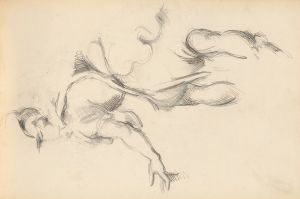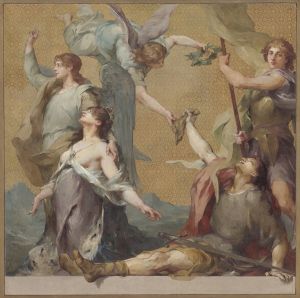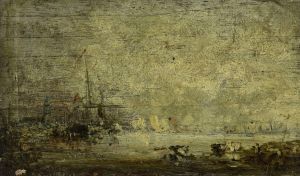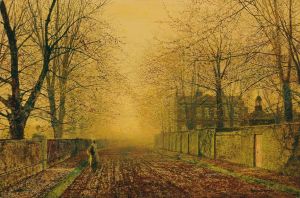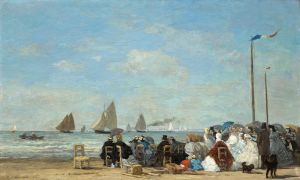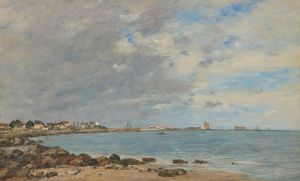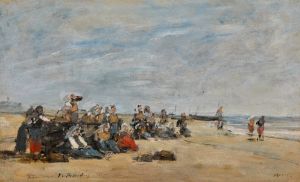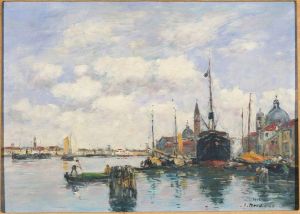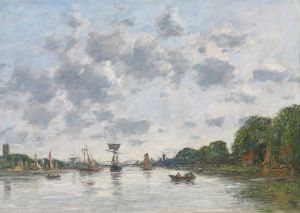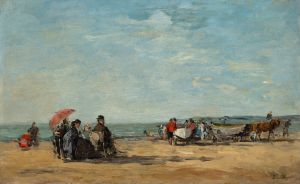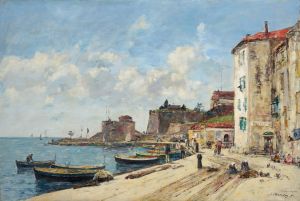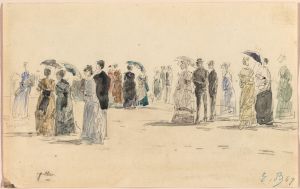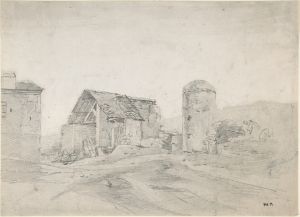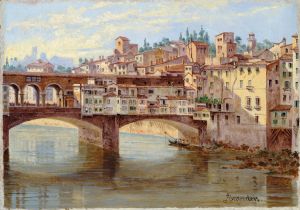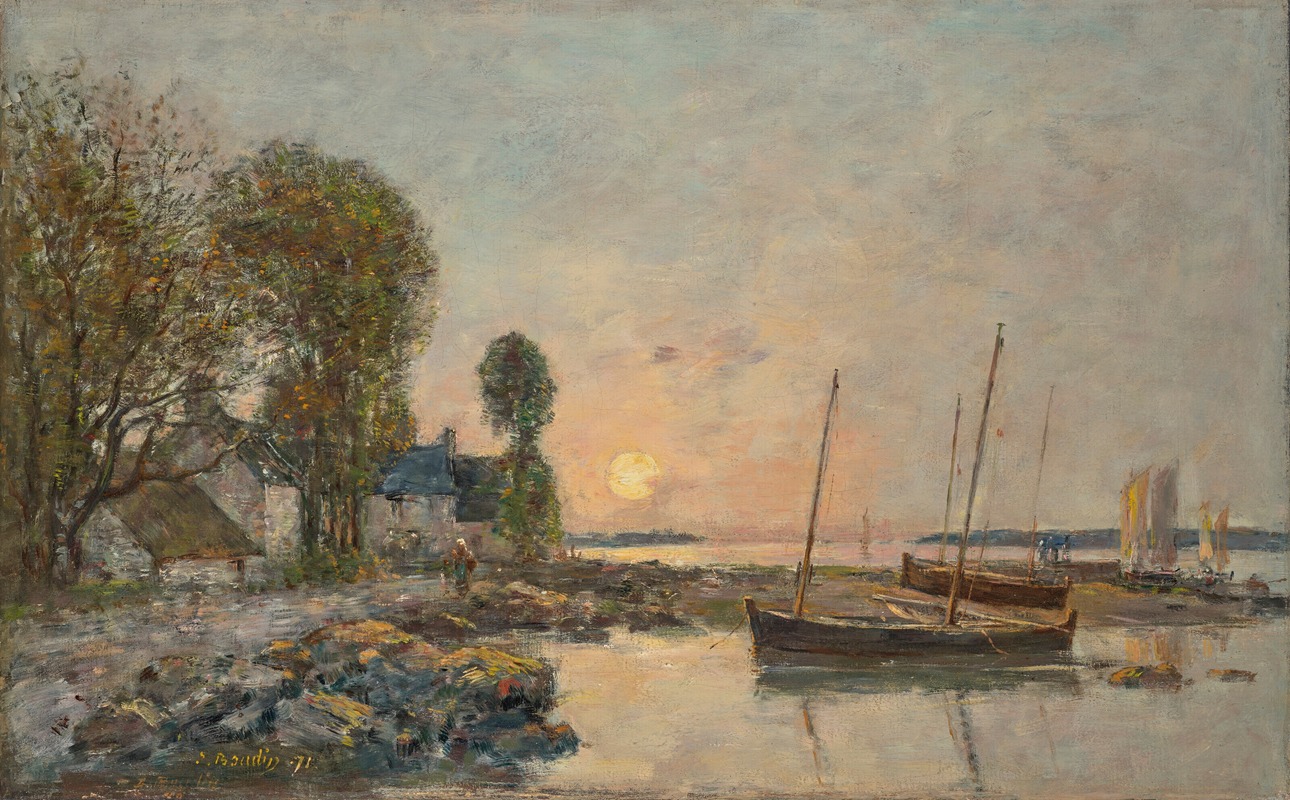
Plougastel. Le passage du bac
A hand-painted replica of Eugène Boudin’s masterpiece Plougastel. Le passage du bac, meticulously crafted by professional artists to capture the true essence of the original. Each piece is created with museum-quality canvas and rare mineral pigments, carefully painted by experienced artists with delicate brushstrokes and rich, layered colors to perfectly recreate the texture of the original artwork. Unlike machine-printed reproductions, this hand-painted version brings the painting to life, infused with the artist’s emotions and skill in every stroke. Whether for personal collection or home decoration, it instantly elevates the artistic atmosphere of any space.
Eugène Boudin's painting Plougastel. Le passage du bac (translated as Plougastel. The Ferry Crossing) is a work by the French artist, who is widely regarded as one of the precursors of Impressionism. Boudin, known for his depictions of coastal scenes and landscapes, created this painting as part of his broader exploration of life in Brittany, a region in northwestern France. The artwork captures a moment at the ferry crossing in Plougastel, a commune located near Brest in Brittany, which was known for its traditional way of life and picturesque scenery during the 19th century.
The painting reflects Boudin's characteristic style, which often focused on the interplay of light, water, and sky. In Plougastel. Le passage du bac, Boudin portrays a group of figures near the ferry, likely locals or travelers, engaged in their daily activities. The composition emphasizes the natural environment, with the water and surrounding landscape playing a central role. Boudin's use of soft, naturalistic colors and his attention to atmospheric effects are evident in this work, showcasing his ability to capture the fleeting qualities of light and weather.
Eugène Boudin (1824–1898) was born in Honfleur, Normandy, and developed a deep appreciation for the sea and coastal life, which became recurring themes in his art. He was one of the first French landscape painters to paint en plein air (outdoors), a practice that influenced the Impressionist movement. Boudin's works often depicted scenes of everyday life, particularly in maritime settings, and he was praised for his ability to convey the nuances of nature with simplicity and elegance.
The exact date of Plougastel. Le passage du bac is not definitively documented, but it is consistent with Boudin's body of work from the mid-to-late 19th century, during which he frequently traveled and painted in Brittany. The region's unique cultural and natural landscapes provided rich inspiration for his art.
Today, Boudin's works, including Plougastel. Le passage du bac, are celebrated for their contribution to the development of modern landscape painting. His ability to capture the transient beauty of nature and his influence on later Impressionist painters, such as Claude Monet, have secured his place in art history. The painting is held in a private or public collection, though specific details about its current location are not widely available.





